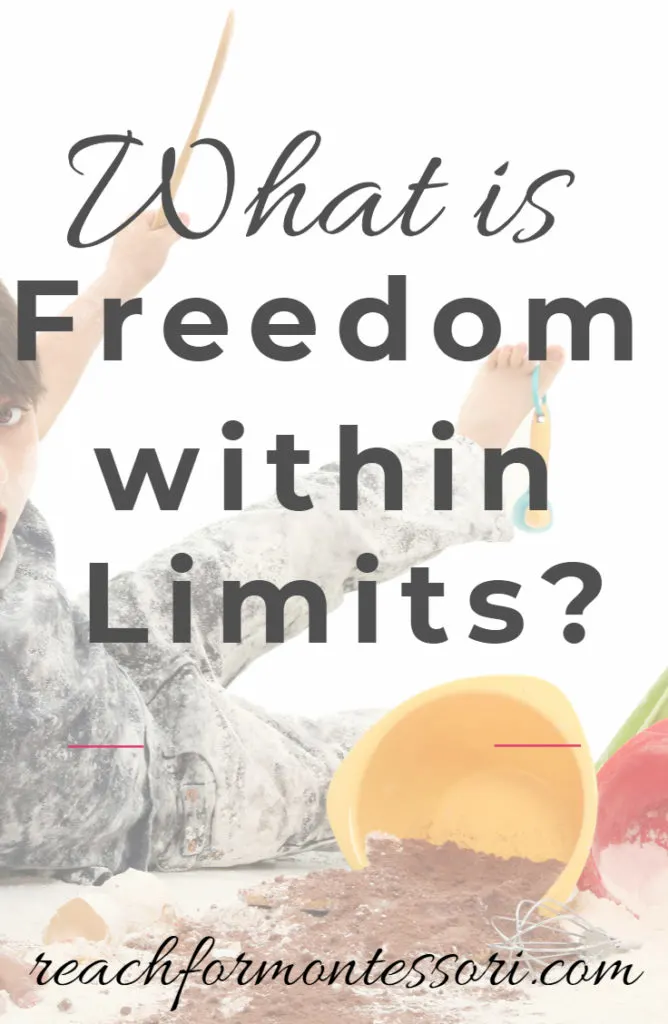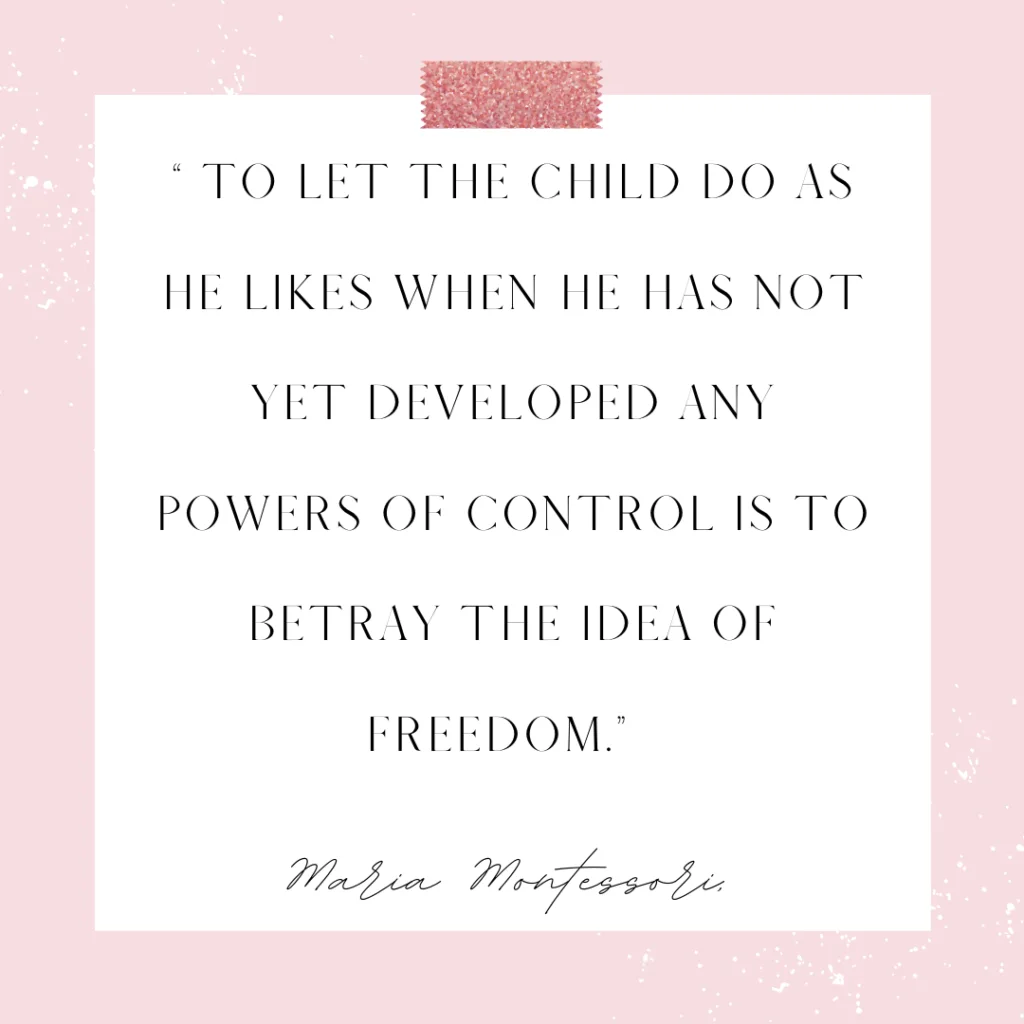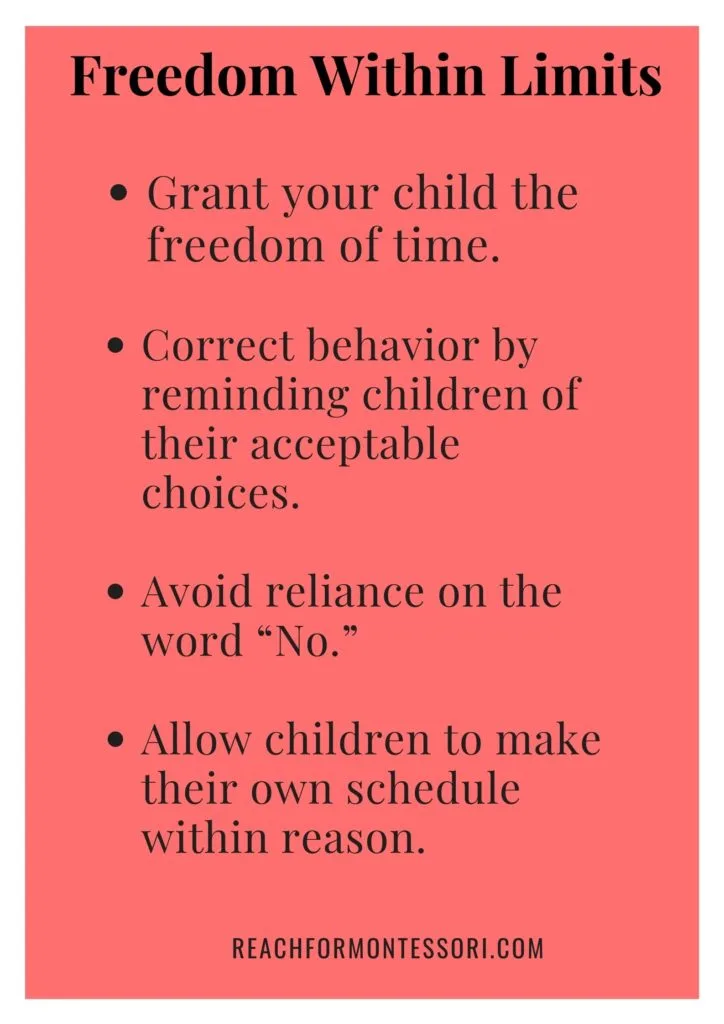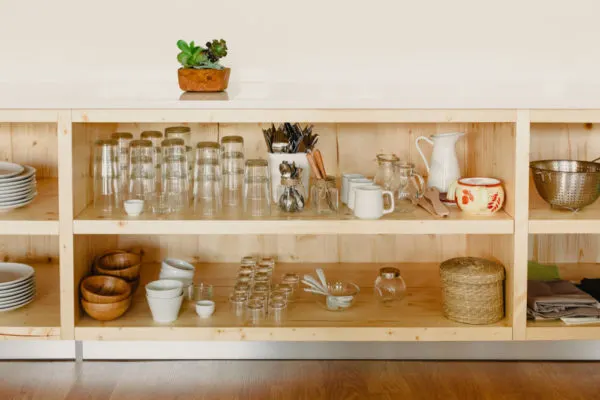While children deserve as much freedom as possible, it is the responsibility of parents and teachers to keep them safe and healthy by restricting that freedom to some extent. This is where the Montessori concept of “freedom within limits” comes in.
Freedom is a basic human right. Its importance simply cannot be overstated.
Yet, within parenting circles and in the context of teaching young children, freedom is still a hotly debated topic.
At first glance, the phrase may appear to be a paradox, but there’s actually a good bit of truth and wisdom behind this adage.
Let’s start uncovering the implications of freedom within limits by nailing down its definition.

Freedom Within Limits Defined
In the Montessori community, the phrase “freedom within limits” is one you will commonly hear. It is used to express the belief that as human beings (albeit small ones!), children should be granted freedom to the extent that it is possible while still preserving their physical and emotional well-being.
It is the acknowledgment that parents and teachers must place some restrictions on a youngster’s freedom in order to create a safe and happy learning environment where they can grow and develop.

Why Freedom Within Limits?
If the safety and well-being of children are paramount (as they should be), then why give children freedom at all?
One might argue that it’s best for adults who are aware of dangers and distractions to make all of the decisions for the child, at least until they can be responsible for themselves.
This is how many families and schools across the world operate.
Montessori takes a different approach, though, and fundamentally, that’s because we believe that it's important to demonstrate respect for the child and his or her choices.
We know that children, like all human beings, deserve respect and liberty.
Moreover, we understand and acknowledge that children have an innate sense of what they need in order to learn and develop into the successful adults they were meant to be.
This is why you’ll often hear the phrase “Follow the child” in Montessori circles.
In this community, teachers and parents will readily allow the little ones to take the lead while they follow close behind with helpful guidance and necessary limits.

Freedom Within Limits: The Importance of Choice
Critics of the Montessori approach to child-rearing have long complained that parents and teachers in the community allow children too much freedom.
From the outside looking in, it may appear that little ones being raised in a Montessori environment do have a great deal of choice—perhaps more so than other children.
That is by design, though. What may look like careless abandon is actually a judicious, well-thought-out decision to grant children as much freedom as possible without putting them at risk of harming themselves or others.
As Montessori herself said. “To let the child do as he likes when he has not yet developed any powers of control is to betray the idea of freedom.”

What Does Freedom Within Limits Look Like?
With Montessori, children are often given choices as they go throughout their day.
Depending on their developmental levels, children may be free to decide what clothes to wear, which foods to eat, and which learning activities to engage in.
They may also be granted the freedom to choose when are where these tasks are performed. Still, there are certain limits placed on these choices in order to preserve a child’s well-being.
For instance, youngsters may be given the choice between two different jackets on a winter day, but they would not be allowed to venture out into the cold without a coat.
Similarly, caregivers may allow a child to opt for one of several healthy foods during snack time, but there would be appropriate restrictions on daily sugar intake, for instance.
The idea is to respect the child’s desires and preferences while also providing a high level of care for his or her well-being.
The Role of the Prepared Environment
When it comes to education, the concept of freedom within limits is embodied within one of the main principles of Montessori pedagogy—the prepared environment.
Montessori teachers are tasked with creating an optimal environment where children are free to learn and grow.
This environment is organized, temperate, and visually appealing.
Here, children are provided with numerous learning activities to choose from, all of which are carefully selected and sometimes even designed by trained Montessori teachers.
What may look like absolute freedom to the child (or even outsiders) is actually a carefully curated selection of materials that are developmentally appropriate and often self-correcting.
This environment enables children to move about freely, make independent decisions, and successfully use and master materials without much direction from their teachers or caregivers.
It’s easy to see how a child in this environment would feel unrestricted and inspired, seeking out desirable learning experiences rather than being forced to engage in a specific task that they may find unappealing.

Do Children Actually Desire Limits?
Limits aren’t just about keeping kids safe and healthy, though. As you’ve probably learned, children actually desire some limitations.
Implementing a few reasonable boundaries within which children can live, play, and work creates a comforting sense of structure.
Within these boundaries, children feel safe and calm rather than overwhelmed or anxious.
Freedom Within Limits in Practice
Below, you will find a few helpful tips for exercising “freedom within limits” in your home or learning space:
- Grant your child the freedom of time. If you can help it, don’t interrupt learning when it is taking place. Allow children to remain engaged in an activity for an extended period of time.
- Implement self-correcting activities so youngsters have the freedom to discover how things work independently.
- Correct behavior by reminding children of their acceptable choices. Avoid reliance on the word “No.”
- Allow children to make their own schedule within reason. This includes snack time, nap time, exercise time, etc. Remember, freedom within limits means enabling choice within certain boundaries (e.g., restricting snacks before mealtime or naps in the evenings).
What freedoms do your children enjoy, and what limits have you found necessary/helpful?
Cheers and don't forget to subscribe!
